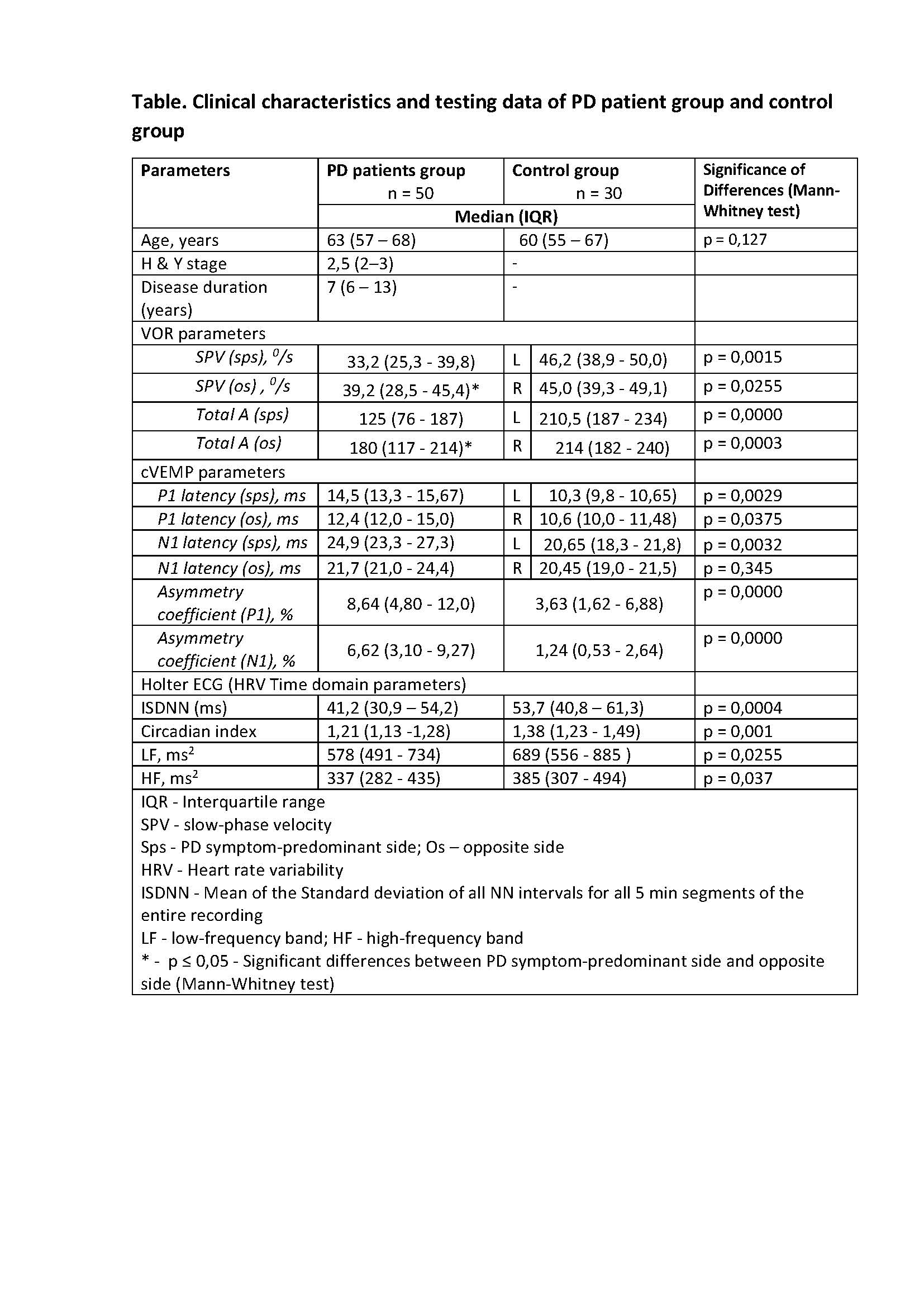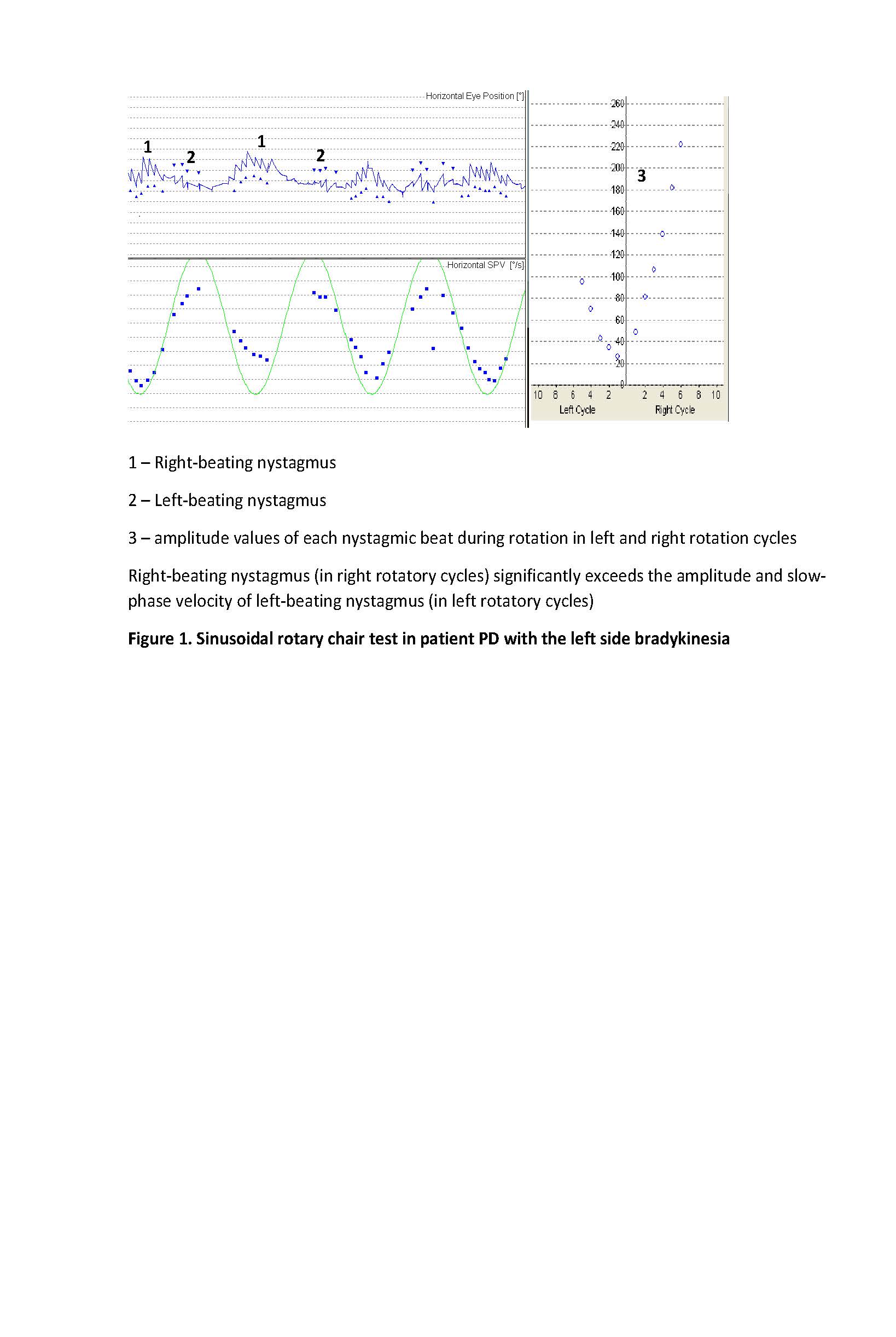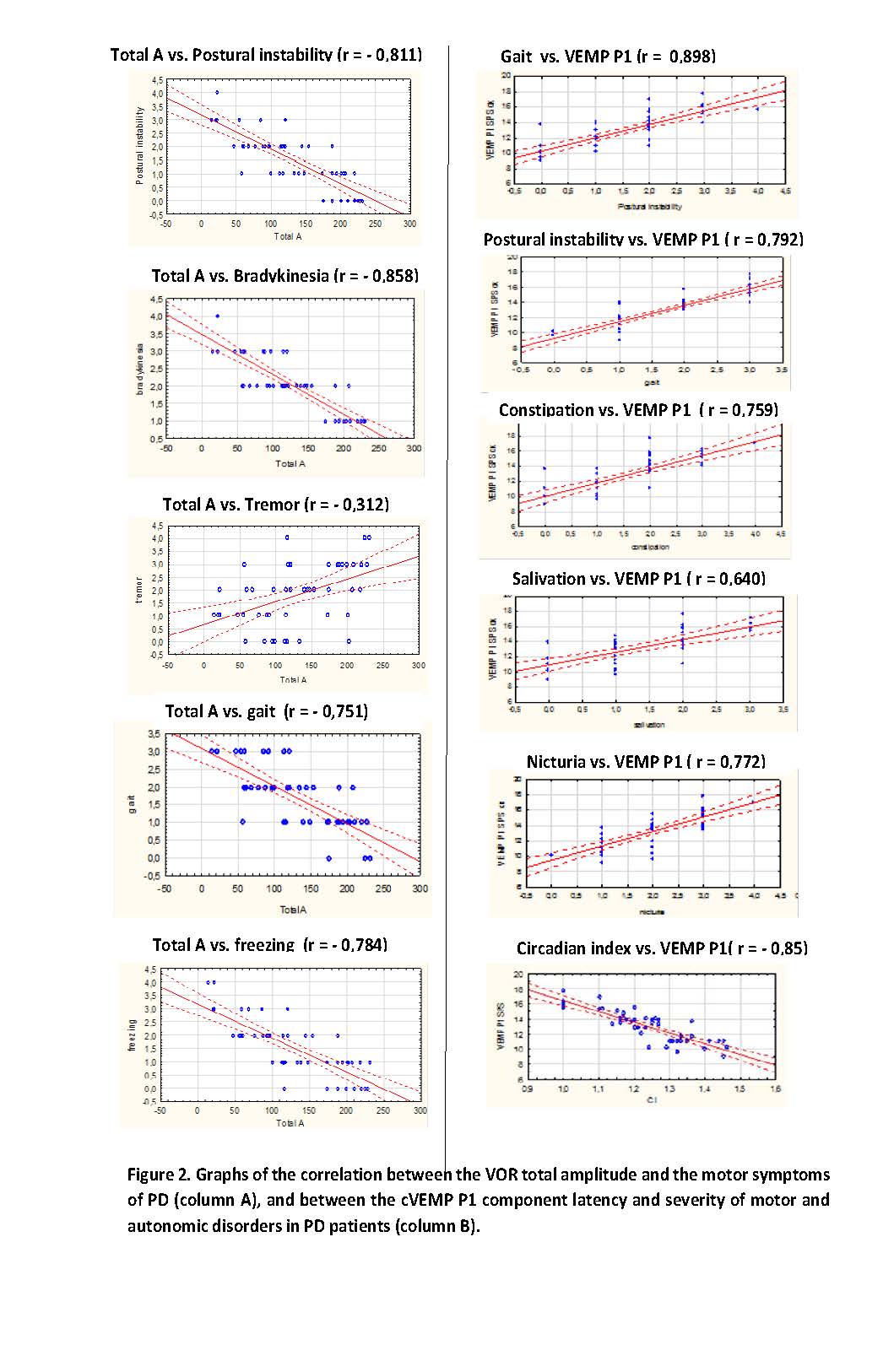Category: Parkinson's Disease: Non-Motor Symptoms
Objective: Investigation of changes in VOR and VCR parameters in PDpatients in relation to motor and autonomic disorders severity.
Background: Vestibulo-ocular reflex (VOR) and vestibular-colic reflex (VCR) are important markers of the vestibular system functioning. Since vestibular nuclei are connected with spinal cord, striatum and the autonomic system structures, they can demonstrate the connection between vestibular disorders and motor and non-motor symptoms of PD.
Method: Videonystagmography and cVEMPs were used in 50 PD patients and 30 healthy individuals. Sinusoidal rotary chair test was performed at constant velocity (500/c), both clockwise and anticlockwise. Parkinson’s Disease Composite Scale was applied for motor symptoms assessment. Additionally, we tested gastrointestinal (salivation, swallowing and constipation) and urinary (urgency, nicturia and urinary retention) domains on 0-4 severity scale. Holter ECG was performed for cardiac function assessment.
Results: We identified a significant decrease in slow-phase velocity and total amplitude (A) in PD patients compared with the control. Furthermore, these parameters were lower on the PD symptom-predominant side (table, figure1). The increase in the cVEMP components latency in PDpatients indicated a slowdown in vestibulospinal conduction which is the basis for postural instability. Also, the Holter ECG data (ISDNN, CI, as well as in the LF and HF frequency bands) was significantly lower in PDpatients.
A decrease in the A correlated with the severity of bradykinesia, postural instability, freezing and impaired gait, but there was no correlation with tremor and autonomic scores. The cVEMP correlated with the severity of postural instability, gait, salivation, constipation and nocturia scores as well as with CI reflected cardiac dysautonomia (figure2).
Conclusion: Thus, the development of pronounced vestibular hypofunction in PDpatients, especially on the symptom-predominant side, confirms the existence of the functional interaction between vestibular system and basal ganglia. Furthermore, VEMP and VOR abnormalities, associated with motor and autonomic disorders in PD, can reflect brainstem dysfunction. Another important aspect is that the increase of the vestibular system activity using various stimulation techniques can help in the correction of both postural disorders and autonomic dysfunction in PD.
To cite this abstract in AMA style:
O. Alenikova, M. Leshkovich. Association of vestibular disorders with autonomic dysfunction in Parkinson’s Disease [abstract]. Mov Disord. 2023; 38 (suppl 1). https://www.mdsabstracts.org/abstract/association-of-vestibular-disorders-with-autonomic-dysfunction-in-parkinsons-disease/. Accessed April 26, 2025.« Back to 2023 International Congress
MDS Abstracts - https://www.mdsabstracts.org/abstract/association-of-vestibular-disorders-with-autonomic-dysfunction-in-parkinsons-disease/



